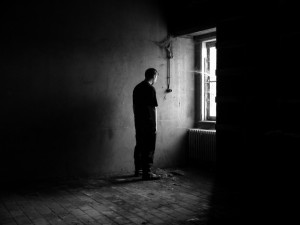 Da Missione Salute (rivista camilliana della Provincia Italiana) Gennaio- Febbraio 2016
Da Missione Salute (rivista camilliana della Provincia Italiana) Gennaio- Febbraio 2016
di Padre Leocir Pessini
According to the data of the World Health Organisation, every year more than 800,000 people take their own lives: this means that one suicide takes place every 40 seconds and every 30 seconds there is an attempted suicide. These are alarming statistics which leave us with a strong sense of consternation.
In Italy, which is one of the counties where suicides are less frequent, according to the data of Istat for the year 2010, the number of deaths caused by suicide were 1,857, with 2,041 suicide attempts (Brazil is eighth on the list when it comes to the absolute number of suicides – in the year 2012, 11,821 deaths by suicide were recorded, of which 9,148 involved men and 22,632 women: about 30 every day). Suicide (deliberately taking one’s own life) is the tragic self-destruction imposed by a person on himself or herself. The consequences for families, friends and communities are terrible and the suffering lasts for a long time after the death of the person involved.
Because of the gravity of the fact of the exponential cases of suicide, in May 2013 the World Health Organisation (WGO), at its sixty-sixth general assembly, adopted for the first time in history a plan of action for mental health. The prevention of suicide is an integral part of this plan which seeks to reduce the suicide rate by at least 10% in the world by the year 2020.
The objective of this initiative of the WHO is ‘to give priority to the prevention of suicide on the global agenda for public health, in social policies, and to make people aware that suicide is a question of public health’.
There is no single explanation for why people commit suicide. Social, psychological, cultural or other factors can intervene to induce a person to engage in suicidal behaviour. In the case of suicides caused by mental disturbance, few of the people involved are led to ask for help. From this important information produced by the World Health Organisation, we can draw certain key messages. Suicide is the second cause of death in people between the ages of 15 and 29. There are in addition signs that lead one to deduce that for every adult who commits suicide, there are more than twenty suicide attempts.
Can one prevent suicide?
Suicides can be prevented. But in order to be able to provide effective answers, we have to adopt a strategy of prevention that involves many sectors. This strategy must seek to strengthen vigilance as well as the mental-health policies exist, and, in particular, centres that combat alcoholism.
Restriction of opportunities to accede to the most frequently used means by which to commit suicide has given good results: poisons, firearms and certain medical products. Services relating to public health must include the prevention of suicide as a central component. Amongst the causes that lead to suicide we should see mental disturbance and the consumption of alcohol, as well as other factors at risk. The key by which to reduce the number of suicides is the paying of greater attention to the frailest and most needy people. Communities have a crucial function in the prevention of suicide. They can support the frailest people, accompanying them and fighting against the unworthy social disapproval that afflicts those who are weakest and have lost their points of reference.
Whatever the case, preventive condemnations should be avoided at all levels, above all those that refer to mental illness and suicidal behaviour. The process of rebuke means that people experience shame and feel excluded and discriminated against. The whole of society should be made aware that suicide is a question of mental health and can be prevented in the majority of cases. At the same time the most serious risk factors should be identified and the people who are exposed to them should be protected in a sensitive way.
Forms of help
In our milieus, a historical-cultural and religious inheritance exists which has to be overcome – it tends to blame those who commit suicide or attempt suicide. One can speak of a responsible act,. from an ethical-moral point of view, only when a person acts in a fully conscious and free way. In the majority of cases of suicide or attempted suicide these two conditions (full consciousness and freedom) are profoundly compromised and consequently the attribution of responsibility to the person involved is impossible.
Solidarity is an important form of help: without doubt, great empathetic nearness to the person should be engaged in and this should also be done in relation to family relatives who endure the profound pain of the loss of a loved one through suicide, even though they do not approve of the act that has been engaged in.














Camillians on Facebook
Camillians on Twitter
Camillians on Instagram